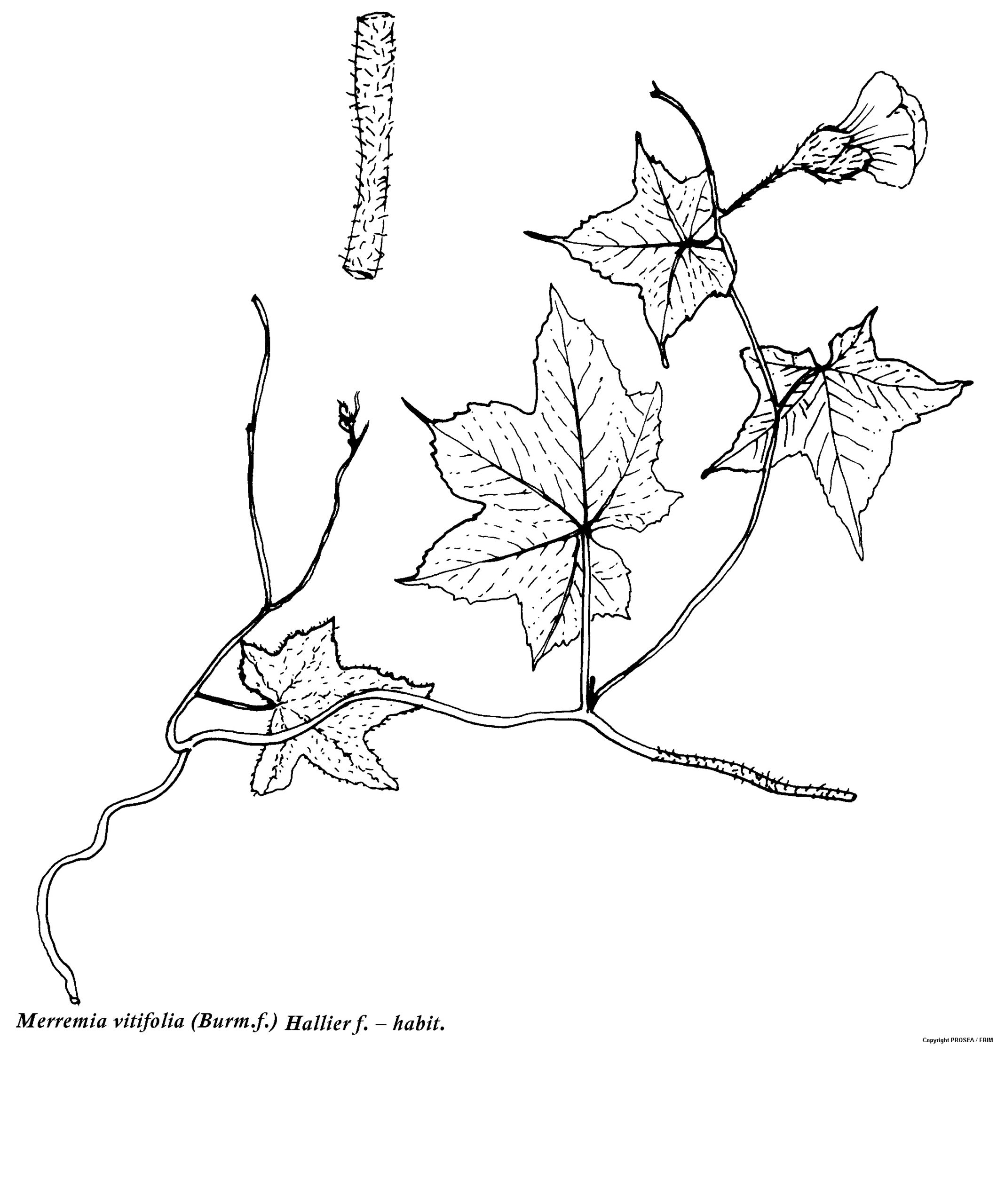Merremia vitifolia (Burm.f.) Hallier f.
Family
Convolvulaceae
Synonyms
Convolvulus vitifolius Burm.f., Ipomoea vitifolia Blume.
Vernacular Names
| Malaysia | Akar lulang bulu, ulan raya (Peninsular). |
| Indonesia | Ginda purang utang (Javanese), areuy kawoyang (Sundanese), dewulu (Madurese). |
| Philippines | Lakmit (Tagalog), kalalakmit (Sulu). |
| Cambodia | Var moba mek. |
| Thailand | Ching chaw. |
| Vietnam | b[if]m l[as] nho |
Geographical Distributions
Merremia vitifolia is distributed from India, the Andaman Islands and Sri Lanka to Indo-China and throughout Malesia.
Description
M. vitifolia is a large twiner, with a size of measuring 2-5 m long, cylindrical stems where the older ones is striate and smooth or patently white hirsute.
The leaves are orbicular in outline, with a size of measure about 5-18 cm x 5-16 cm, cordate base, palmately lobed, with 5-7 lobes, broadly triangular to lance-shaped, acuminate to obtuse apex, coarsely dentate to crenate margin, sparsely to densely hairy and with a size of measuring about 2-15 cm long petiole.
The flowers are 1-3(-5) together, with a size of measure 1-15 cm long peduncle and tiny bracts. The flower buds are narrowly ovoid or acute in shape, with a size of measuring 8-20 mm long pedicel and club-shaped in fruit. The sepals are oblong to ovate-oblong in shape, with glandular pellucid dots, with a size of measure 12-20 mm long while in fruit is a measuring about 20-25 mm long, thick, subleathery and whitish inside. The petal is funnel-shaped, with a size of measure 4-6 cm long and obtuse lobes. The midpetaline bands are distinctly 5-veined, bright yellow in colour, towards the base of paler and with spirally twisted anthers.
The capsule is slightly spherical in shape, with a size of measure 12 mm high, papery and straw-coloured. The measuring about 6-7 mm long seed is dull black in colour and smooth glabrous.
Ecology / Cultivation
M. vitifolia occurs in regions with or without a strong dry season, in open grasslands, thickets, hedges, along fields, in teak forests, along edges of secondary forests, on river-banks and roadsides, from sea-level up to 900 m altitude.
Line Drawing / Photograph
References
- Plant Resources of South-East Asia No. 12 (2): Medicinal and poisonous plants.



